#Fundamentals of creature design
Text

Finished design for the Eastern Serix, which I made using the Fundamentals Of Creature Design book. I really recommend picking it up if you want to really challenge yourself on really researching and having several passes at creating fictional creatures and really thinking about how and where it would live, feed, walk/swim/fly, breed, sleep. Really useful stuff to practice and full of great examples and references.
I wanted a tree dwelling hunter, so i tried to combine traits from a Fossa, Emerald Tree Boa, and a created gecko, I also threw in some inspiration from lemurs and frilled lizards.
The Eastern Serix is nocturnal and hunts mice and small birds, it uses its long, bristly tail to suspend its body from branches and releases when it wants to drop onto unsuspecting prey below. It then wraps its tail around them and the bristly fur stands on end and sticks into the prey, holding in place like thousands of tiny needles. It is then able to unhinge its jaw and swallow prey whole. The striped fur along its neck can be extended to form a frill to scare off predators.
#Fundamentals of creature design#creature design#creature creation#speculative zoology#creature concept#creature#speculative biology#speculative design#speculative art#speculative biology art#digital art#black and white art#procreate#animal design#animal design art#animal art#fossa#Tree python#lemur#frilled lizard#digital design#concept art
9 notes
·
View notes
Text
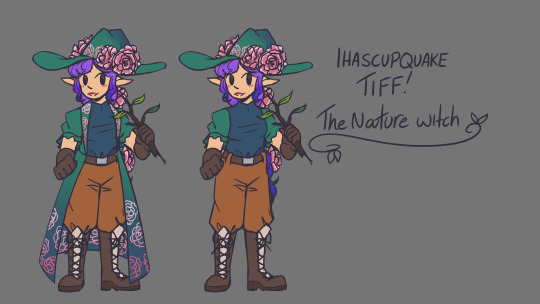
I would like to thank the Witch Craft SMP for gifting me a reason to draw Ihascupquake fanart in the year of our lord 2023
#rambles#my art#mcyt#witchcraft smp#wcsmp#ihascupquake#ihascupquake fanart#*points gun* ALL OF YOU APPRECIATE TIFFANY QUAKE THIS INSTANT ITS AN ORDER#THAT RIGHT THERE IS MY MINECRAFT MOM AND ON OF THE REASONS I DRAW TO THIS DAY I LOVE HER#anyways omg hiii blockmen art? from aj catzgam3rz? who'da thunk!#i love her outfit and ALL OF THE WITCHES OUTFITS??? THEY ALL LOOK SO COOL???#i wanna watch peoples intros and then draw more of them because it makes my brain go brrrr :)#oh also colours subject to change! but I enjoy this as like a starting point :D also the flowers are inspired by Peonies!#idk if I got close enough to call them peonies but thats what I was looking at!#also accidentally maybe implied a starborne!Tiff with this design? In my Heart of Hearts she's some sort of Fae creature but maybe both :0?#okay okay ranting over but i am serious if you are interested please consider ihascupquakes pov :D#she is probably one of the most fundamentally influential content creators I engaged with as a kid#and she is still so entertaining and sweet ;w;#I'm suddenly really worried that the ref I was using was too dark for the teal?? because the thumbnail looks brighter >:/?
346 notes
·
View notes
Text

beast in my book
#this book is actually all about beasts and creatures. but this one specifically is The Beast#the book's called Fundamentals of Creature Design btw I've been rotating it in my brain for the past 15 hours
4 notes
·
View notes
Text
I agree with the idea that a lot of humans nowadays have a severe lack of curiosity about the world, but I think there has to be a solution other than shame.
I think about this every day because the fate of our world hangs on curiosity: either we will rediscover the importance and wonders of the soil and bugs and flowers and water and finally with the whole natural world, or this way will be forgotten.
People raised in the great wasteland of the suburbs and roads and buildings have never seen most of the plants and creatures that are supposed to fill every field and meadow. So many humans have never seen with their own eyes more than a scant few of the most common of hundreds of wildflowers that are supposed to surround them. Some live in biomes designated forest and have never witnessed truly mature trees. They do not know what the birds sound like. When they see an ordinary deer, they are awed and amazed by it or even afraid of it. They have never eaten any of the delicious wild fruits that grow in their homeland; all birds except starlings and robins and sparrows are so strange and beautiful that they stare in wonder. They confront insects like people on an alien planet encountering an unknown life form: What is this? Will it hurt me?
I cannot even describe the grief I feel on behalf of humans that grow up and live in the wasteland of pavement and lawn. That we are expected to live in these brutal environments, that we are expected to be content without the right or ability to live alongside living creatures, to walk among wildflowers, to hear birdsong, to feel the plush softness of moss, to see even common bees and butterflies—the fact that we live, work, and raise our children in poisonous wastes where nearly everything has been wiped out, and the simplest and most abundant of natural pleasures are rare privileges—it's cruel. It's a crime against the human spirit. It makes me so angry and sad.
When I started researching plants, I had no idea that I would end up expanding my mind so much that I would be virtually a different person within the year. Before I learned, I could not have imagined the diversity and beauty that exists in the world. My mind did not have the tools to come up with it.
I lived for over twenty years believing that there was only one species of firefly. I lived for over twenty years not knowing that the Southeastern US has native bamboo. I had never tasted the indescribable flavor of a pawpaw or seen the iridescent vibrance of a red-spotted purple butterfly. I had only seen a Pileated Woodpecker out the window of a car. I had never touched true topsoil, the soft, living blanket of rich, sweet-smelling earth full of mycelium, as springy and plush as a mattress. Just one year ago, I knew nothing!
Humans, as creatures, are insatiably curious and hunger for beauty. It is so cruel to deprive a human of relationship with their natural environment.
It is no wonder that we are all addicted to the internet—we have a crucial need that is unfulfilled. Compared with a forest, the world of lawns and buildings is so ridiculously flat and unstimulating. You would expect humans in such a place to feel constantly bored, restless, frustrated, and incurably sad.
I feel that lack of curiosity can be a chosen thing, but it is also a defense mechanism against a world that will feel like sandpaper on the senses of the curious.
But we need curiosity to fix this—we need the ability to notice the living things that have crept in at the edges of the wasteland and be infected and tormented by their beauty. We need to recognize the forest reaching into our cage in the form of tiny saplings. We need to discard the word "weed," not because it is derogatory because it is fundamentally incurious—it designates a plant as needing no identity outside of its unwantedness. We must learn their names. We must wonder what their names are.
15K notes
·
View notes
Text
That said, the D&D 3.5 Paladin was bad. It was badly designed, it had bad rules, and in conjunction with the other notoriously bad rule, alignment, it could cause havoc.
Now personally, I never had ANY problems with it in my tabletop games. I played paladins and loved it, and I loved it when other people played paladins, and it was great. But that's because, collectively as a group, we took ONE look at that terrible rule where the paladin's code of conduct prevents them from associating with Evil characters or "someone who consistently offends her moral code", and immediately went, "that's stupid, we ain't doing that, it would ruin the game".
We also didn't love the concept of alignment as a cosmic force, and didn't care for Usually Evil Goblins and Always Evil anything. And when a class's signature ability fully depends on whether creatures are capital E Evil, well that affects storytelling, doesn't it? But we all saw it the same way, and we were happily able to change it without any disagreements. In the end we had a Paladin… similar to 5e now that I think of it: completely ignore the Code's association clause, tailor the Code to personal stance or a specific Order, Detect only fiends and undead and the like, Smite anything you want, Fall only if you really fuck up, and never presume that just because you haven't Fallen yet everything you've ever done is justified and correct and anyone who disagrees with you is objectively wrong.
Basically, there were 2 options in 3.5. You either houseruled and/or handwaved things, and in matters of alignment interpretations erred on the side of "what makes the game go",
OR, you played with Rules As Written, and filled the forums with questions like "should the paladin fall?" (one such thread per week, conservatively), "we got into a fight over the Paladin, what to do?", "is it Evil to pick pockets? because we have a Paladin in the party", "the Assassin uses poison, shouldn't that offend my moral code?", and shit like that. Just... pointless strife, all the time. Again, never happened to me, but I was appalled to read about it, over and over and over.
People got intense with 3.5 Paladins (both pro and against) because it was BADLY DESIGNED and had BAD RULES. Its mechanics forced narrative choices on the entire table, and the only way to make it frictionless was having a party where no one wishes to explore a character's bad side ever, no one does things that aren't bad but WotC branded Evil™ in this or that splatbook, and everyone magically agrees all the time on "what is right and what is wrong" and "what is Lawful and what is Chaotic", which is simply impossible. The most subjective thing in the world (ethics!) was presented as an objective cosmic force, and how you interpreted it would determine how much damage the Paladin deals in combat, and whether the Paladin could keep associating with the party, and if the Paladin is still a Paladin. And all that in a game, let's not forget, whose basic, fundamental premise is "kill things and take their stuff". I'm sorry, this is tremendously stupid. It's the WORST design.
I know that for some people it worked as written, and good for them, but for the many many people it didn't work, well it's obvious why.
540 notes
·
View notes
Text
My thoughts on drawing wings (an unofficial tutorial)
Do you want to get better at drawing your favorite winged character? Do you have winged OCs? Just want to learn something new? I can't promise this post will help, but maybe it'll give you some helpful tips.
I know, I knowww, wing tutorials have been done to death. I don't care. This was initially inspired by a conversation on twitter, but actually I've wanted to write down my notes on the topic for a long time lol. Basically wings are one of my special interests so it's very important, for me, to draw them both nicely and also realistically.
On that note, let me first show you my resume *distant sound of floodgates opening*
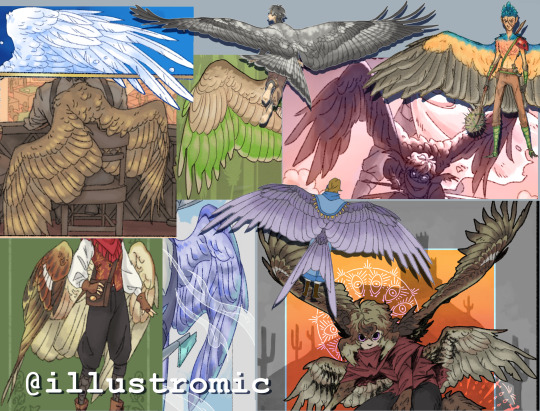
Like what you see? Read on!
(Oh, and I will only be covering feathered/avian wings bc those are the type I know best.)
Now, I'm not here to give you a step-by-step guide on wing anatomy and aerodynamics, because there are plenty of other resources that cover this already, and I'll list my faves at the end of the post. Right now, I'm going to give you some easy guidelines and tricks that I wish more artists knew.
1: Wings do, in fact, have bones (crazy, I know) and are actually very rigid because they have to support the weight of a living creature. There are some positions you cannot physically force a wing into irl.
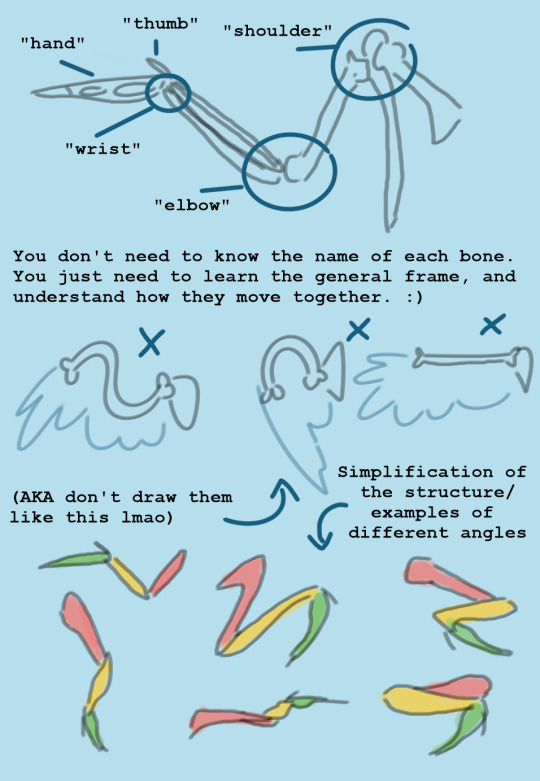
2: Flight feathers are not placed willy-nilly on the wing, because then they wouldn't catch the air properly. Again, like the bones, they are rigid and strong, so don't draw them like fur or ribbons. All wings have the same pattern of feather placement, with slight variation depending on species. If you learn the feather sections, it will automatically improve your drawings a lot.
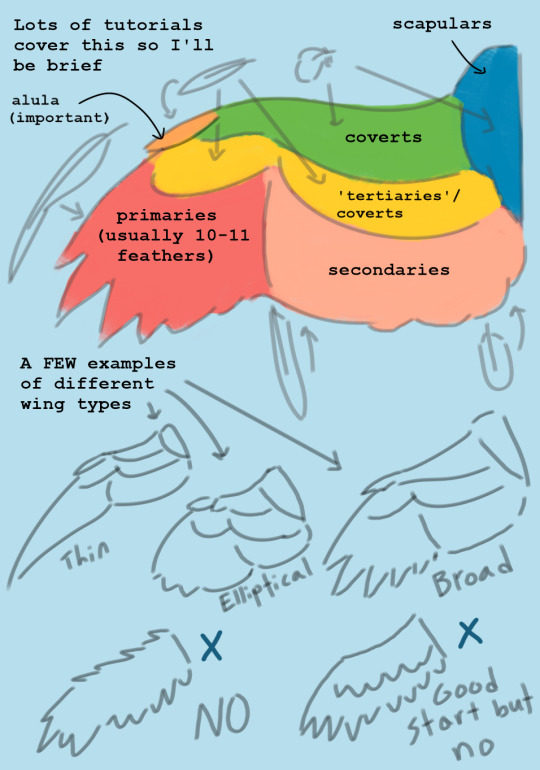
2.5: Feathers overlap each other like a handful of playing cards, and this looks different depending on which side of the wing you're drawing. They always do this unless they're extremely untidy.

3: The size of the wingspan is important if you're going for a more realistic design. There is no "scientifically accurate" measurement when it comes to fictional creatures, but my general rule is when in doubt, you probably need to make them bigger. Personally, for my original winged human species, I give them wings that can be up to 12 feet long each (the artistic sacrifice is that it's really hard to fit the wings on the dang page lmao, so make your own call).
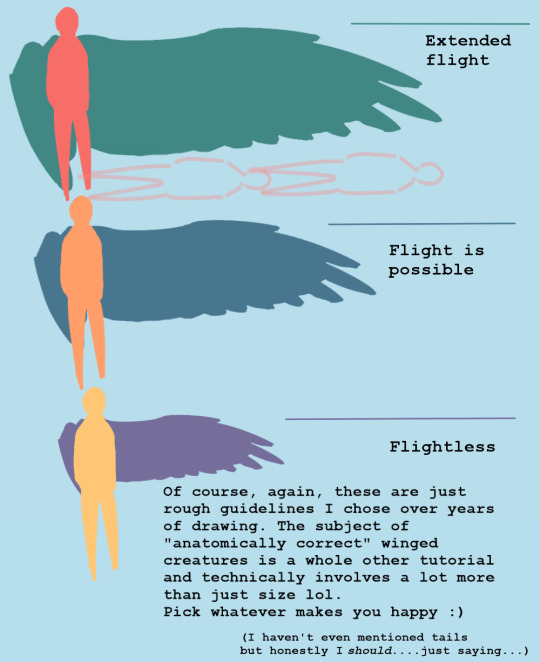
4: Get used to drawing folded wings. Most of the time, birds keep their wings folded because it prevents them from getting damaged and it conserves energy. The trick is to get good at visualizing how the joints bend and overlap (look at plenty of photos!) In general, they can fold much tighter than you think.

5: Wings and feathers take a lot of patience to draw, but the results are worth it. I've seen so so many incredibly beautiful and skillful artworks that are---well, maybe not ruined, but still negatively affected by a pair of wings that look like an afterthought, or not even like wings at all. You have no idea how much a little extra time and practice will add to your work until you see for yourself.

Finally, some notes on "stylized" wings: Of course it's perfectly ok to draw more simplified/cartoony wings if that's your preference!! BUT there is a difference between a stylistic choice and a lack of effort/poor understanding of the subject matter. Even cartoonists have to learn the fundamentals of realism so they know how to make their designs logical and appealing. Here are some examples of more stylized wings that I feel retain the core principles of anatomy/aesthetics:
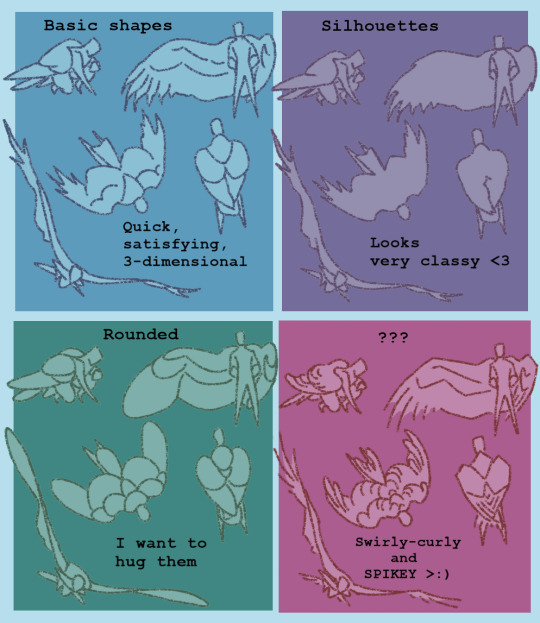
And last but not least: A list of helpful links I use personally for reference and inspiration!
I made this pinterest board for general artsy inspo, and this board to curate my very favorite tutorials/refs/information, focusing on the scientific aspect of wings and flight in general. Feel free to use both! (I also suggest pinterest in general for pose refs and such, but try to only practice using photos at first and not other drawings.)
I highly recommend this blog and this blog if you want examples of artists who draw more realism-based winged creatures!! They are both huge inspirations for me and I think you should totally follow them even if you don't plan to draw wings lol <3
If you're REALLY serious about it, my favorite ref books are: Winged Fantasy, a lovely drawing book by Brenda Lyons; Proctor & Lynch's Manual of Ornithology; and Angelus vincens by R. Spano, which is essentially an artbook by someone who (I believe) designed biologically plausible "angels" for their senior thesis.
Ok, idk how to end this lol but I hope it helped! I know it's not my normal kind of post but I'm super busy with college stuff rn and this was all I had time for. If you guys have any questions or feedback, please let me know!!!
-Aloe <3
#my art#wings#drawing#tutorial#the way I could've talked for so much longer haha#but it's 3 am for me and I am fading fast so GOODNIGHT
2K notes
·
View notes
Text
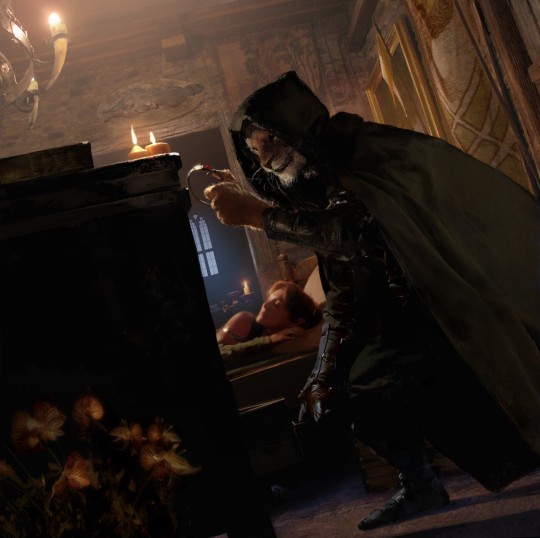
DM Tip: Getting Stealth Right
After I posted my recent breakdown of how Baldur's Gate 3 adapted and in many ways improved the 5e ruleset I got a lot of people in the comments specifically talking about the modification to stealth:
If you hide while not in a creature’s sight cone, you automatically succeed. If you try to hide while in a creature’s sight cone, you automatically fail. If you are hidden and enter a creature’s sight cone, you must roll stealth against the creature’s passive perception. This may be a straight roll, advantage, or disadvantage, based on the creature’s senses and the level of lighting. Some creatures with different senses such as blindsight may follow different rules
Now there was a lot of tumblr standard bad reading comprehension going on, but what stuck out to me was that most of these people didn't appreciate the changes/improvements because they wern't aware of how badly stealth is worded in base 5e, and that just about every good dm just adlibs it to avoid the pitfalls of playing RAW

Look how often in the official hide rules it says something along the sides of "The DM decides", rather than giving guidelines or reasonable expectations about when a player should be able to hide. DMs should of course be empowered to make rulings, but players should always have a baseline that they can use to make reasonable decisions and calculated risks.
Because BG3's rules are run by a computer they can't be arbitrary: Players KNOW they have to get out of vision/sense range so that's the action they take if they want to hide. Likewise, making the stealth check when they enter an enemy's vision rather than when they start hiding feels better at the table because it doesn't tell the hiding character that they've been spotted or not until the moment it happens.
Forgive me if it seems like I'm being pedantic but we need clear and elegant design when it comes to the rules of our game, especially when we're dealing with something as fundamental as who can see who when.
Art
290 notes
·
View notes
Text
Theory: The Connection Between Dragons and Valyrians in A Song of Ice and Fire

Okay, so this isn't a new theory by any means, but I'm into it and I wanted to record it somewhere so I could go back to it purely for my fanfiction writing purposes. I will be making reference to these ideas in my writing, so this isn't really anything more than an infodump for myself for what is essentially medieval smut masquerading as intellectualism.
The question on everyone's minds: why are Valyrians unique? What gives them the ability to ride dragons? Their appearance? Why the obsession with incest? And dragons - where did they come from? Why is there such a clear link between this subset of people and the occurrence of the giant winged firebreather?
I'm going to try to articulate my theory that ties some of the lingering questions together into a cohesive hypothesis. Stay tuned. Keep in mind, none of this is particularly profound or innovative, so please don't presume any motivation for this other than what I've explicitly stated; but I need a place to put it all or it'll keep swirling in my head.
Note: this commentary accepts and incorporates the show's decision to characterise Daenerys Targaryen as being immune to fire. Don't like, don't engage.

How might this theory be communicated in fanfiction?
The narratorial vehicle I'm using to at least partially convey this theory in-universe is Blood and Fire, a "fragmentary, anonymous, blood-soaked tome containing information about dragons", "sometimes called The Death of Dragons". It features in one of my chapters, in which my MC is gifted it by Daemon Targaryen - the ultimate intent is to have this reverted to the Citadel by the time Robert's Rebellion occurs. Though my MC will not understand the entirety of its contents, as I'm going to suggest that it's written in a proto-Valyrian language or thereabouts, what is going to be implied is information regarding the creation (and therefore destruction) of dragons.

The theory: centuries of magically-augmented atrocities in artificial selection
My theory is that ancient bloodmages conducted a series of magical experiments designed to create the ultimate supremacist society - to what end, I'm still fleshing out. I presume it'll be linked to the prophecy of the Prince Who Was Promised, and the imperative to begin constructing supernatural lineages that will contribute to the creation of the Azor Ahai figure. I may end up extrapolating on this at a later time. In regards to the experiments: I'm implying stuff like cannibalism, mutilation, bestiality, all sorts of fundamentally unnatural atrocities that are designed to subvert the natural order to use that power as a springboard for the genesis of new species.
Essentially, I posit that dragons are a cross between firewyrms and wyverns using blood magic; but in hand with this, Valyrian people are an artificial subspecies of human designed to preside over these draconic creatures, all in the name of building a civilisation with these creations at the spearhead.
I think it is likely that the first species interbreeding between firewyrms and wyverns were then mated to these Valyrian shepherds. I believe there were further interbreeding events from this common ancestor that streamlined into two distinct lineages; proto-dragons and proto-humanoid Valyrians. Of course, this involves a great deal of magic to MAKE happen, because I don't foresee these acts as being capable of producing fertile offspring in isolation. I think this might've been assisted by other rituals involving the aforementioned cannibalism, blood swapping (as in literally forcing draconic blood into human veins and vice versa etc.), and other atrocities. Crimes against nature require crimes against nature, and all that. Over time, the Valyrian humanoid became recognisably and functionally human, with notable elements in appearance that make them seem unearthly or otherworldly; concurrently, dragons are bred to be larger and larger, to be more responsive to commands, and such. It is also possible that further DNA was interchanged through other cross-breeding events to enhance certain draconic traits in the Valyrian humanoid, in line with the evolution of the 'modern' Valyrian dragon.

The geographical origin of dragons
I believe that these experiments were conducted firstly in the Shadow Lands of Asshai - explaining the existence of ancient dragon bones and eggs, or at least bones and eggs that appear of draconic ancestry - and then later moved in and around the Fourteen Flames, the "volcanic area" of the Valyrian peninsula. But of course, this gives rise to a potential discrepancy in historical data: namely, that dragons are said to have existed long before the origin of Valyria. I think this was the case, but that this doesn't necessarily refute the idea that dragons were a blood magic experiment planned concurrently with the creation of a dragonriding people.
Dragons feature in stories from the Age of Heroes, occurring from roughly 10,000+ years before Aegon's Conquest to anywhere between 6,000 and 2,000 years before the Conquest. I think that, owing to the lifespan of dragons and the degree of time it would take to produce a self-reproducing, self-sustaining, large enough specimen to 'complete' the experiment, it stands to reason that this blood magic project would have at least taken several thousand years to achieve, if not more. This isn't a hundred-year task; this is a long haul. It also stands to reason that specimens would have been released for 'testing' purposes, to see how they perform in the wild. This would perhaps explain how dragons are seen in Westeros, in Ib, and in Sothoryos - these may have been the proto-dragons created along the timeline of magical experimentation. Once released, it conceivably might have been difficult to have them returned, and so these proto-dragons were able to spread to other continents. I think these dragons would have been isolated events; as in, not the product of wild populations reproducing. At this stage, I believe this was not something the species would have been capable of. It is possible, though, that offshoot/s capable of reproduction might have unwittingly been created, resulting in a separate lineage loosely related to the deliberate construction of the Valyrian dragon.
Asshai seems to have the most concrete claim to the origin of dragons out of all creation myths; ancient eggs and bones are present in this land. The Asshai creation myth even supports my suppositions here, as it is claimed that "an unnamed people first tamed these dragons, brought them to Valyria, and taught the Valyrians their arts before departing from the annals of history". It is possible this is a reinterpretation of the notion that bloodmages begun their experiments here and relocated to Valyria later on.
Given the historical anecdotes made of wyverns, it is likely that procuring wyvern stock was not an impossible task for continental Essos. However, firewyrms are said to have originated specifically at the site of the Fourteen Flames, perhaps serving as an explanation as to why experimentation was ultimately shifted here. Furthermore, it seems possible that ancient bloodmages may have harnessed the fire from the volcanic chain to fuel and amplify their dragon creations, hence the movement. It may even be likely that the Fourteen Flames are a source of magical power in and of itself, given that it is noted in-universe by GRRM that there is something otherworldly and strange about them. It seems likely that the fires from this volcanic region were used to fuel the spells and rituals that created dragons and early Valyrians. Fire and blood.
When experimentation was finally complete and two races prepared to act out what may have been a deliberately crafted 'origin', the Valyrian peninsula would have been perceived as the best bet based on magical properties of the site and convenience. And thus came the immortal tale of how the Valyrians, "originally a community of shepherds", "discovered dragons" and "tamed the mighty beasts" before "establishing the city of Valyria and becoming skilled in both magic and metallurgy." The Valyrians even "told tales of themselves that claimed they were descended from dragons, and were kin to the ones they now controlled", further suggesting that this theory holds weight.

Why would this theory hold validity?
Again, I'm leaning into a tie with the Azor Ahai prophecy. I'm not sure how specifically, but that'll come in time I suppose. I may as well assume that there might have been existing political tensions with ancient civilisations, impelling a subset of bloodmages to take matters into their own hands and attempt to engineer an overthrowal effort. They might have even just decided "fuck it, let's see what we can do in the name of magic and science." It is even possible they were attempting to engineer some kind of great good or evil to appease a higher power; i.e. a desire to satisfy a benevolent or evil god for the purposes of religious devotion.

What world-building benefits does this have?
It serves as an explanation as to why some Targaryens in the showverse are fireproof. Namely, Daenerys Targaryen. If dragon genetics are in Valyrian ancestry - dragons being firebreathing and thus necessarily immune to flame - then it stands to reason that this particular trait expresses itself in the human bloodline.
It addresses the emphasis on Valyrian blood being a prerequisite to innate dragon-riding ability, save for magical intervention i.e. the Dragonbinder horn. Valyrians have shared DNA tied by blood magic and likely a ritualistic breeding of genes that call for a dragon's obedience to their humanoid overlords.
It answers how some Targaryen fetuses are birthed possessing dragon-like features, e.g. the scaled bodies or presence of wings. There is latent dragon DNA in Valyrians, and also possibly the expression of the abominable nature inherent to their bloodline.
It supports the existing preoccupation with incest (likely simply an imperative to keep Valyrian breeding strictly within dragon-riding populations before the Doom) in the Targaryen line. The bloodline must keep a large enough quota of dragon DNA to prevent it from being bred out, necessary for dominion over the dragons.
Dragons are intelligent creatures that can understand commands given to them. If human DNA is present, this helps account for these qualities.

Implications for the readers
There is a discomfort at play here, namely in that discussions of selective breeding and eugenics imply that there is an element of superiority in people of Valyrian descent. I too am uncomfortable with the idea that the ability to master a dragon requires belonging to a specific group of people in order to succeed at this. Assigning someone's ability to perform any action to an inherited quality rather than a practiced skill or individual determination goes against pretty much everything I and others believe about the way the world works. Essentially, this theory largely suggests that success is earned based on bloodline or connection rather than personal merit. And I do agree that this is a valid conclusion to make. But I would like to interrogate what this therefore means in the larger narrative at play in ASOIAF.
Firstly, ASOIAF is a subversive text; it is written in a way that challenges traditional fantasy tropes and even our own values as readers. I would argue that the incorporation of a theory such as the above serves to add further to this trend established by GRRM, thereby enriching any inclusion of this in a fanmade derivative of his work (i.e. fanfiction).
Secondly - what happens to Valyrians? What happens to the dragons? Do they 'succeed'? In short, no. The Doom wipes out the vast majority of this civilisation, including the dragons. What is left dies out within a half-millenia following the Doom. The dangerous thing about believing in one's innate supremacy is that they forget how tenuous that hold on power and dominance is. That, I feel, is a central theme to this theory and to ASOIAF at large. The Targaryens were so entrenched in their own arrogance, their own perceptions of 'purity' and dominion, that they failed as dragon-riders, as rulers, as representatives of a dying people, as humans. There are barely any who perceive them as anything other than monsters by the time we begin Game of Thrones. Putting all this effort into reinforcing some sort of species superiority only makes the fall all the more ironic. It serves as a reminder that you can move heaven and earth to make power, but you won't keep it for power's sake. There was no point to any of it - making the dragons, making the Valyrians, any of it. It was doomed to fail from the start because people always forget that you cannot win on the basis of 'blood purity' or 'dynastic lineages'. You demonstrate why you deserve to be a leader.
Thirdly - Nettles. I want to speak on Nettles specifically, as she's a character in Fire & Blood I love a lot and I'm getting increasingly nervous about the way some people are going to react when she arrives in House of the Dragon. Many people are attracted to Nettles's character because she's a distinct diversion from the Valyrian supremacy narrative. I agree. I also happen to think that this diversion is more powerful if one considers that Nettles isn't entirely separate from this narrative, but that she works within it to fundamentally alter what it means. Nettles is described as a dragonseed; dragonseeds are explicitly identified as being of Valyrian descent. Nettles is also common-born, brown-skinned, and notably different from the other dragonseeds. She claims Sheepstealer, a vicious dragon unclaimable by any other Valyrian or dragonseed, and she does this because she is arguably in a position to understand him the best - she befriends him by bringing him a slaughtered sheep each morning, appealing to his instincts and satisfying his need for sustenance. As a girl who'd only ever experienced the worst of humanity growing up, I believe she sees Sheepstealer and the way he lashed out at the world and simply did what she wishes someone would've done for her. Given her food. Given her space. Given her appreciation, free of obligations or transaction. She claims Sheepstealer; she manages to have Daemon Targaryen to fall for her (I don't believe they were platonic at all, nor that she deliberately 'enticed' him - I think he was just INTO HER and I support it); she alone escapes the fate of most dragon-riders and dragons of the Dance. She does it all without relying on any innate Valyrian-ness, even if she may possess this ancestry. It's not why Sheepstealer truly yields to her. It's not why Daemon is in love with her. She is Valyrian in the barest sense of the word, and it is because she isn't entrenched in the lie of her own supremacy that she is ultimately the character who survives. Stories don't always have to have clear-cut messages; characters don't always have to just be one thing. Nettles can be Valyrian, and Nettles can also be the representation as to why you cannot buy into the narrative of Valyrian superiority.

Conclusion
So... yeah. Use this if you want. Disagree if you want. I think it solves a bunch of problems I'd been facing when it came to rationalising not only why Valyrian lineage is intrinsic to dragon-riding, but why Valyrian characters we encounter in ASOIAF are so engaged in the narrative that they are intrinsically better than everyone else. And ultimately, why this narrative is doomed to fail from the start.
In short: Valyrians and dragons are the result of blood magic that was used to create a common ancestor, from which two distinct populations were selectively bred for using all manner of magical augmentations - the human Valyrians and the dragons we encounter in a traditional sense in ASOIAF. This was done over many, many generations, and likely incorporated some of the worst atrocities we can conceptualise. It explains why Daenerys is fireproof in the show; why dragon-riding is exclusive to Valyrians save for magical intervention; why Targaryen fetuses are sometimes dragon-like; why incest is practiced in the Targaryen family; and why dragons are both extremely intelligent and specifically beholden to the authority of their Valyrian masters.
If you have any thoughts, feel free to interact. No hatred, please. Keep it civil. Thank you very much for reading!

#house of the dragon#hotd#game of thrones#a song of ice and fire#asoiaf#hotd writing resources#house of the dragon fanfiction#game of thrones fanfiction#a song of ice and fire fanfiction#asoiaf meta#a song of ice and fire meta#house of the dragon meta#game of thrones meta
115 notes
·
View notes
Text
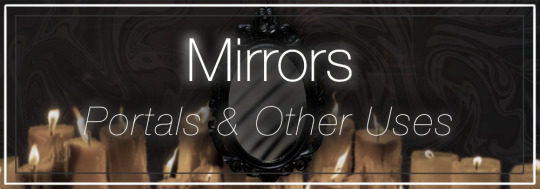
Title: Mirrors: Portals and Uses
Recommended Reading
Altars: Uses & Design
Dimensions & PlanesDualities in Witchcraft
Researching Witchcraft
Spiritwork: First Steps
Basics of Spellcasting
Basics of Warding
Basics of Banishing
Energy Work Fundamentals
Intermediate Energy Work
The Subtle Body
The Wellsource
Correspondences: Research, Creation, & Use
Please note that some information on this post comes from personal experience as well as conversations with my elders and other practitioners.
Introduction
Mirrors harbor a unique and paradoxical role, often existing at the intersection of clarity and obfuscation. Throughout the annals of history, these reflective surfaces have been the subject of mystic fascination and contemplation. Shrouded in a mysterious aura, mirrors are an integral component of various mystical practices across diverse cultures.
A seminal instance is observed within the African Yoruba tradition, where mirrors are emblematic of Oshun, the deity of beauty, love, and prosperity. Here, these reflective surfaces serve as conduits to divine insight, manifesting the ethereal into the perceptible. Parallel to this, in the indigenous cultures of the Amazonian Shipibo-Conibo people, mirrors - often represented by reflective surfaces of water - are perceived as gateways to understanding the complex layers of the universe, thus embodying a significant spiritual tool. Moreover, in many East Asian practices, mirrors carry deep symbolic significance and are fundamental in rituals aiming to ward off malevolent forces. Among the Ainu people of Japan, for instance, mirrors function as amulets, protecting the holder from supernatural harm.

Mirrors as Portals
A ubiquitous yet perplexing facet is the concept of mirrors functioning as portals. These reflective surfaces, more than mere decorative elements or vanity tools, hold a quintessential place in mystic and magical practice, extending beyond their ordinary use to become intermediaries between the unknown and the practitioner. Diving into the understanding of mirrors, one might read about their role as gateways. The duality of mirrors, both reflective and transparent, presents a tantalizing paradox: what they display isn't a mere reflection, but an alternate universe or spiritual plane. This dichotomy positions mirrors as a connective threshold, an aperture between the observable and the unknown, the physical and the mystical. Despite their allure, mirrors necessitate careful handling within a magical context. It is a common misconception that mirrors only function as portals during explicit rituals. However, their latent potential as conduits should not be overlooked. Consequently, it's paramount that mirrors remain shrouded or safeguarded within consecrated spaces to prevent inadvertent connections to unwelcome energies. Approaching this aspect with a measure of respect and precaution is instrumental in maintaining the equilibrium of such spaces.
Historically, the mirror's role as a portal is discernible across a myriad of cultural contexts. In Greek mythology, Narcissus fell victim to his reflection in a pool of water, demonstrating an early symbol of mirrors as deceptive portals to the ego. In Chinese folklore, the mythical creature Nüwa repaired the heavens using a seven-colored stone, comparable to a mirror, again associating these reflective surfaces with cosmic transitions.
Mirrors often represent truth, knowledge, and self-awareness, owing to their reflective properties. However, their potential as portals imbues them with added dimensions of mystery, transformation, and transition. The mirror, in this context, becomes a metaphor for change and personal evolution, presenting a liminal space where the known meets the unknown, thereby offering new possibilities and perspectives.
Given the energetic properties inherent in mirrors, they should always be treated as portals. Their constituent materials - silica and silver - interact in such a way that a subtle, yet potent, energetic field is generated, a field potentially capable of bridging multiple planes. To ensure safety, mirrors should be handled with respect and caution. They should be appropriately covered or warded when not in use, especially within sanctified spaces. It is also recommended to cleanse mirrors regularly to reset their energetic state and prevent any residual energies from accumulating.
Energetic Interactions & Metaphysics
Energetic Interactions
Amid the energetic symphony of the universe, each object reverberates its unique energetic signature, contributing to the collective composition. Mirrors, with their paradoxical and captivating nature, have often been the center of esoteric investigation. This intrigue is rooted not only in their physical attributes but also in their nuanced energetic interactions.
To comprehend the energetic interplay of mirrors, one must first examine the properties of its constituent components. Primarily, mirrors are composed of glass, a substance formed from the supercooling of molten silica into a quasicrystalline structure. Coating the back of this silica-based surface is a thin layer of reflective metal, usually aluminum or silver.
Silica is very insulative, and negentropic, meaning that its natural energetic state eventually resets regardless of influence. It is also Attractive, meaning that it slowly pulls other energetic compounds to itself. Due to the quasicrystalline structure, glass is refractive and enthalpic, meaning that it becomes thermal under pressure- or releases energy. Silver is conductive and repulsive in nature. Due to how silver atoms prefer to arrange themselves (a face-centered cubic lattice) it also tends to be very metastable, meaning that its natural energetic state is not prone to change regardless of energetic interactions. Because the two are constantly next to each other, because of the silver backing, the negentropic nature of the silica causes an energetic cycle of attraction and repulsion, this oscillation combined with the conductive nature of silver and the entropic nature of glass generates a small energetic field. While this is normally negligible, it creates the perfect environment for the propagation of connections between spaces or planes that are out of phase with our own.
The unique composition of mirrors implicates a distinct effect on the ambient energy. Mirrors, with their inherent vibrational resonance, can both pull and push energy, thereby influencing the surrounding energetic atmosphere. The capacity of mirrors to manipulate energy finds practical applications in the sphere of spellwork and energy transmutation. Through their reflective properties, mirrors can serve as effective tools in spells that involve redirection or amplification of energy. They can be used to create energetic boundaries, return energetic influences, or focus and multiply ambient energy and energetic projections.
Common Metaphysics of Mirrors
The mirror, with its intrinsic capacity to reflect, serves as a potent symbol of the Jungian 'Shadow' - the hidden aspects of one's psyche that are often suppressed or ignored. Through the act of looking into a mirror, one is invited to confront and acknowledge these facets, facilitating a journey towards holistic self-awareness. The mirror, in this respect, catalyzes self-reflection and introspection, propelling an individual towards self-understanding and acceptance. Delving into the sphere of mirror magic uncovers its profound connection to personal transformation. The reflective nature of mirrors encapsulates the principle of change, embodying the potential for alteration and transformation. As such, mirror magic can be utilized as a tool for self-development and evolution, offering a means to focus energy towards constructive change. Beyond symbolism and transformation, the metaphysical properties of mirrors warrant exploration. Mirrors, by their construction and function, are potent energetic entities. The amalgamation of silica and metallic elements results in a unique vibrational resonance, enabling the mirror to absorb, store, and emit energy. This energetic characteristic, coupled with the mirror's reflective capacity, amplifies its metaphysical potency, making it an influential tool in various mystical practices. Moreover, the reflective nature of mirrors aligns them with the principle of 'as above, so below', a concept found in various esoteric traditions. This principle speaks to interconnectedness, suggesting that what occurs on one level of reality also happens on another. Mirrors could, therefore, serve as a solid physical replacement for any correspondence necessary.

Divination, Spells, & Ritual
In the enigmatic arena of divination, mirrors command a distinctive presence. Among various techniques, scrying - the act of gazing into a reflective surface to perceive spiritual messages - emerges as a common method of introspection and foreknowledge. This practice unfolds as a tripartite process, encompassing the scrying ritual, technique, and subsequent interpretation.
Scrying, an ancient form of divination, leverages the reflective properties of reflective surfaces, like mirrors, to delve into the psyche, unveil hidden knowledge, or prognosticate future events. This technique transcends conventional sensory perception, engaging instead with subconscious and/or spiritual entities. The mirror functions as a medium, harnessing and focusing the widened attention in order to project images or symbols onto the reflective surface. These visual constructs carry messages from the spiritual domain, providing insights that range from self-understanding to predictive revelations.
Techniques & Rituals for Scrying
Executing mirror scrying necessitates a meticulous approach. Often, the process commences with the preparation of the space and the individual. Creating a tranquil environment, devoid of disruptive elements, facilitates a deeper, unhindered connection with the spiritual plane. Personal preparation includes grounding and centering exercises to align the individual's energy with the ambient energy of the environment. They then place a light source between them and the reflective surface. Once prepared, the practitioner enters a meditative state, allowing their gaze to soften and unfocus while looking into the mirror. This passive observation invites subconscious impressions to surface and be displayed on the mirror. Maintaining an open mind and a receptive state is crucial, as the visions or symbols may not be immediately clear or might require subsequent interpretation.
Interpretation of Images & Symbols in Reflections
Post the scrying experience, the practitioner embarks on the task of interpreting the observed symbols or images. This phase is intrinsically subjective, as the significance of the symbols often rests within the personal context of the observer and their held convictions and correspondences. However, there are common archetypes and symbols that carry collective meanings, which can provide a starting point for interpretation.
For instance, water-themed images might signify movement, emotions, or the unconscious, while an image of a bird might symbolize freedom or spiritual elevation. However, these interpretations are not rigid, and the practitioner must trust their intuition to derive the true message from the symbols. Being able to pull specific concepts from abstraction can be an invaluable tool in this practice. Moreover, it's worth noting that the absence of specific images during scrying does not indicate failure. Sometimes, the experience might be more of an energetic shift or a feeling, which are equally valid forms of divinatory communication.
Examples of mirror spells for different applications
Harnessing the power of mirrors, one can devise a multitude of spells tailored for diverse purposes. One such example pertains to protection, where a mirror can serve as a shield to deflect negative energy. Here, the mirror is positioned facing outward, symbolically repelling unwanted influences, thereby safeguarding the individual or space.
Another practical application can be found in the realm of healing. A mirror, due to its reflective nature, can be utilized to channel and focus healing energy towards a specific target. For instance, an inscription or symbol associated with health could be drawn on the mirror surface. Subsequently, this healing symbol is then "activated" by focusing one's concentration on it, allowing the mirror to magnify the healing intention.
Mirror spells also prove instrumental in the domain of self-improvement. One may write or speak affirmations into a mirror, thereby employing its reflective capability to reinforce positive change. The mirror's surface serves to amplify the affirmation, aiding in its internalization and materialization.
Ritual Practices Involving Mirrors
Mirrors, acting as tools for focus, protection, and transformation. One common ritual involves the use of a mirror as a portal for spiritual communication. In this practice, the mirror is treated as a gateway, a connection point between the physical and spiritual planes. Practitioners may engage in meditation or trance work in front of the mirror, seeking to establish communication with spiritual entities or access deep layers of the subconscious.
Another ritual entails the use of a mirror in a consecration ceremony, where the mirror is "cleansed" of any residual energy and "charged" with a specific purpose. This process involves elements like incense, candles, or natural elements like moonlight, leveraging their specific energetic signatures to cleanse and empower the mirror.
One must, however, proceed with caution when interacting with mirrors in a ritualistic context. Given their potent properties, mirrors must be handled respectfully and carefully. Always ensure that the ritual mirror is properly stored or covered when not in use to prevent any unintended energetic interactions.
Example Ritual That Incorporates Mirrors
Ritual of Mirror Reflection
Objective: This ritual aims to promote self-reflection, growth, and self-awareness. It harnesses the unique properties of mirrors to aid participants in seeing and understanding aspects of themselves more clearly.
Optimal Circumstances: Conduct this ritual during a new moon, a time known for introspection and new beginnings. A quiet, dimly lit space with minimal disturbances is ideal.
Ingredients and Correspondences:
Mirror: Acts as the primary tool for reflection and introspection
(Optional) A bowl
White Candle or electric candle: Represents purity and clarity.
(Optional) Lavender Incense: Used for relaxation and heightening awareness.
(Optional) Salt: Represents grounding and protection.
(Optional) Incense for grounding
(Optional) Offerings for your spirits
Preparation:
Create a clean, sacred space where the ritual will take place.
Place the mirror on a flat surface.
Practice the incantation until you can recall it without breaking your train of thought: “Show me, guide me, reveal the truth inside me.”
(Optional) Place the salt and lavender in a bowl and then set the candle in the bowl, cradled within the mixture to support it.
(Optional) Place the candle between you and the mirror before lighting it.
If the bowl, salt, and lavender is omitted, just place the candle between you and the mirror. Be sure that the candle is in a glass container for fire safety.
Procedure:
Creating and Engaging the Headspace:
Ensure that your space is free from distractions by turning devices off or on silent, taking measures to get pets quiet and happy, notifying other residence that you require some quiet, putting on headphones with music, and setting comfortable lighting.
Use the flame from the candle dance. Let its clarity inspire your mind to remain focused and clear throughout.
(Optional) Affirm to yourself, “Today, I seek a clearer understanding of myself.” if you think it will aid you.
Maintain this headspace by repeatedly returning your focus to the candle's flame and the points of gnosis whenever your mind wanders.
Entering a State of Gnosis:
Light the incense and take a few deep breaths, inhaling the calming scent.
Sit or stand comfortably before the mirror, gazing deeply into your reflection.
Allow any extraneous thoughts to flow out with each exhale.
Gradually move your awareness inwards on your own psyche.
While maintaining equal awareness of each component, break up your psyche into subsequent parts by whatever categorization feels most optimal for you.
Include awareness of your subtle body in your gnosis, as it also plays a role in the psyche.
Take steps to ensure that your state of gnosis is unbroken throughout the spell.
Programming the Energetic Body:
Within your gnosis, move your center of consciousness into your subtle body.
Incorporate your Wellsource into your awareness and how it feeds energy into your subtle body.
Begin to radiate Wellsource energy out of each energy point radially. Be sure that the amount of energy per second is unilateral for each point.
Energetic Constructs:
While maintaining gnosis, reach out and sense the energetic properties and projections from the mirror. It should be a rapidly oscillating field that projects roughly 10 cm -1 m away from the mirror relative to its size. If you’re using a black mirror, stone mirror, or any mirror that doesn’t have a silver backing it will have a different energetic sensation.
(Optional) Incorporating Spirits:
To integrate spirits, whisper a humble request for guidance from trusted spirits and give whatever offerings they prefer. To identify them, look for sensations of warmth, a gentle pressure, or feelings of serenity.
Ensure that you do not demand, but gently request their presence.
Understand that they will help you if they desire, but do not rely on or expect their assistance.
Ritual Action:
Gaze into the mirror, allowing your eyes to defocus slightly. As you do, softly chant or whisper, “Show me, guide me, reveal the truth inside me.”
With each repetition, delve deeper into introspection, understanding the various facets of your being.
Sink your awareness into the components of your psyche. Try not to label them, and just observe them. Trust that your subconscious will bring back what it is you need from the working.
Concluding the Ritual:
Collect the energy you released and send it into the earth.
Thank your spiritual aids, if you called them, and invite them to leave.
Extinguish the candle and clear the space, ensuring to store the mirror safely.
Cleanse the space using whatever means are more comfortable to you.
Note: Always cleanse the mirror after use to reset its energetic state. This can be done by washing it with salt water or vinegar. If you’d like to seal the mirror, draw a sigil on it and/or cover it with a black or white cloth.

Spirit Work
Mirrors, in their multifaceted roles within various esoteric traditions, exhibit a powerful capacity for spirit work. This encompasses a wide spectrum of practices ranging from entity banishment to spirit communication. The exploration of these applications, while deeply intriguing, also necessitates an attitude of respect and careful handling given the potent nature of this work.
Examples of Mirrors in Use for Spirit Work
In several indigenous cultures, mirrors are employed for spirit work, acting as conduits between the physical world and the spiritual realm. For instance, among the indigenous Huichol people of Mexico, mirrors are often integrated into shamanistic practices to facilitate communication with ancestral spirits. This specific usage is chronicled in "The Huichol: A Culture Walking Towards the Light" by Susana Valadez and "Shamanism and Spirituality in Therapeutic Practice" by Christa Mackinnon.
In Asia, particularly within the indigenous Ainu community of Japan, mirrors, known as "Iyomante," are considered sacred objects that bridge the gap between humans and "Kamuy" (divine beings). Details of this practice can be found in "The Ainu and their Folklore" by John Batchelor and "Ainu: Spirit of a Northern People" by William Fitzhugh and Chisato Dubreuil.
Using Mirrors for Banishing
Mirrors also play a role in the banishment of unwanted entities. The rationale behind this practice is that the mirror's reflective surface 'returns' the entity's energy back to itself, which can prove disorientating or repelling for the entity. It can also act as a portal to another spiritual plane through which an entity can be sent to. A particular method involves placing the mirror with the reflective side facing outwards towards the direction from which the negative energy is perceived to originate. During this process, the practitioner maintains a focused state, using projections from the subtle body to direct the unwanted energy into the mirror.
Using Mirrors for Spirit Communication
The reflective nature of mirrors has led to their usage as tools for spirit communication, serving as a medium through which messages from the spiritual realm can be received. This practice often involves mirror gazing or scrying, where the practitioner enters a meditative state and focuses on the mirror's surface, inviting communication from spirits.
One notable example is the "Psychomanteum," a mirrored chamber used for contacting spirits of the departed, popularized by Dr. Raymond Moody, author of "Reunions: Visionary Encounters With Departed Loved Ones". This technique requires a carefully controlled environment and preparation to facilitate spirit communication. It's recommended for only experienced practitioners or under the guidance of a seasoned professional. It is important to note that while mirrors can be effective tools in spirit work, some methodologies may not work for everyone due their vagueness or whether they’re writing from a personal narrative.

Patreon Shoutouts!
Megan Kipp
Jinsu
Ing Mar
Cosmicauquamarie
Elizebeth T.
Ash
Thank you for your continued support! My patrons help me maintain the drive to create content and help me keep food in my pantry.
My patrons of Mystic tier and higher had access to this article a week before it was public! To see other perks of supporting me, click here!
This article was reviewed and edited by ChatGPT
269 notes
·
View notes
Text
it's the moment like 4 of you have been waiting for:
i finally rotated pact creature design in my brain enough to post about it. to all the people who sent me asks wanting to hear my thoughts explaining Why Pact Creatures Are So Good this ones for you.
the core of pact's monster design boils down to one very good fact about pact's worldbuilding: in the world of pact, the universe canonically loves a good story. magic literally runs on themes and ideas. subsequently, strong themes aren't the end result of pact's monster design so much as they are the most fundamental aspect of it--meaningful themes and narratives are such a textually important part of how pact monsters work that one bogeyman outright tries to start a conversation with blake by, upon noticing the birdhouse in his soul (tm), asking if birds are important to him.
what really seals the deal on this being fascinating is that pact monsters aren't invented wholesale--a lot of the book hinges on offering its own explanations for preexisting folklore or urban legend. pact takes a variety of common threads in the way cultural myths & monsters are presented, picks out the conceptions with compelling implications, and distills them into one design so thematically coherent and clarifying that it makes you go "ohhh, why aren't All ghosts/dragons/fae like this? this is Exactly What They're Supposed To Be."
like, we all know that ghosts are dead people, and oftentimes the appearance and/or behavior they're written as having is either implicitly or explicitly based on reenactments of their past life/how they died, and sometimes they're depicted as lucid but more often than not they're depicted more like broken or warped remnants of a person, and sometimes they make things colder/give off Bad Emotional Vibes/etc. those are generally true assertions about how ghosts are often culturally presented.
pact takes that and explicitly declares that ghosts are what happens when something so bad happens that an imprint of the resultant misery is left on the fabric of the universe. some ghosts appear horrifying because their appearance is warped and exaggerated beyond what's realistically possible to match how awful whatever happened to them felt. some ghosts are more lucid because their imprint is more recent, or has been strengthened and fed by human attention instead of left to decay. some ghosts are less lucid because they were forgotten. when ghosts make the atmosphere feel awful to be in, that's because the ghost isn't just the imprint of the person, it's an imprint of the awful thing itself. incredibly interesting! it feels so very much like the absolute heart of what ghost stories are about--about the grief and horror of being impacted by the ever-present echo of something terrible, about something so viscerally wretched happening that reality itself cannot forget it, about the emotionally powerful interactions between someone still-living and the memory of someone already long gone.
(pact also gives an aside that, in very rare scenarios, neutral or arguably even positive occasions which leave a sufficiently strong enough impression can also become ghosts. genuinely fascinating expansion.)
& the thing here is that pact does this for creatures like ghosts that are already richly thematic and iconic, but it Also does it for creatures with less obvious theming. how do dragons work? what's pact's underlying explanation for their position as immortal, powerful, regal, fire-breathing* fantasy monsters?
*&, depending on the media, sometimes ice-breathing or poisonous or whatever else
well, you see, dragons are recursive loops. "dragons are recursive loops" is perhaps one of the Top All Time sentences in the entire book, and the delightful thing is that, in addition to sounding excellent, it makes sense.
that's how they generate and spit out so much of whatever their element is. they're snarls. they're ouroboroses. they're something feeding into itself, self-sustaining for thousands of years, drowning anything which threatens it in torrents of whatever the self-feeding element is--fire, sometimes, but it could be poison, or ice, or whatever else, and that's why you've probably heard of ice dragons in addition to classic fire dragons. Dragons Are Recursive Loops. recursiveness is, after all, a form of immortality.
or, like, fae? we all know that faeries are incomprehensibly old/outright immortal Tricky Little Bitches who like to manipulate people while posing in an inhumanly/horrifically beautiful fashion and going "teehee." pact takes that to a fantastically surreal level of extreme artifice, one that's almost grotesque in its dreamlike nature--they have all lived for so very long that, to them, boredom is worse than death, and so they have complicated social games spanning centuries, and speak in the most practiced of misleading wordplay, and perfectly curate their forests so that even the smallest pebble is an intentionally-chosen setpiece for their play. they graduated from handjobs a couple dozens of millennia ago--now they're more into erotic-poetic descriptions of full-body degloving. you will not notice when a faerie steals and replaces your child, because you are very young and stupid compared to them, and playing-pretend at being your child is only the briefest of trifles in their unfathomably long lifespan.
the other good bit is that pact explicitly acknowledges that faeries run on what is colloquially deemed Bullshit--the universe likes a good story, and faeries have gotten very good at telling it a moving story. if a faerie tells a good enough story about having a sword that breaks the laws of physics, then that is what their sword will do. and so the way to combat faeries is not to out-bullshit them--because no one is out-bullshitting a being with thousands of years of bullshitting practice--but to say "no, that's fucking stupid and made up" until their implausibly long sword acts like a sword of that size actually should and shatters on the spot.
& all of these writing decisions feel so naturally truthful to what these creatures are Supposed to be--they're really not wholly new takes, they're a presentation of preexisting ideas in a way that gets why those ideas appeal to people and goes full-throttle on all the most thematically rich or otherwise narratively interesting parts. It's Good Writing. I Like It. you could spend an entire essay breaking down the presentation of literally any single one of pact's creatures, it's that compelling in its reflection and organization of Ideas About Creatures.
#pact time#pact textpost#pactblr#<- fuck you we are dragging that into usage#parahumans#<- fuck you random pactpost event you should read it#pact creature design
170 notes
·
View notes
Text
While not physically dependent on Kanohi the way Matoran are, Makuta give them equal cultural weight. A Makuta's mask is their identifier. It is difficult to identify who's who if you are all natural shapechagers and illusionists, so it is customary to avoid altering one's mask too drastically in the company of other Makuta. The Hagah tradition to honor past heroes by wearing masks shaped like theirs is derived from this philosophy.
Masks are never swapped or gifted, with a single historical exception. Icarax inherited the Mask of Shadows, and gave his mask of Scavenging to a lowly Matoran as a show of power. Icarax was too foolish to realize Teridax had just done the same to him.
Masks are also emblems of a Makuta's character, their beliefs and philosophies distilled into a single object. Teridax's coup changed the Makuta from scientists and shepherds to occult chessmasters, but can be thought as a shift from the Mask of Mutation to the Mask of Shadows. Would the Makuta have become isolationist hermit-kings had Krika taken control? Accelerationists and disruptors had Gorast?
Only one of Great version each mask has ever been made*, and it is uknown who made them or the Noble versions rewarded to a Makuta's chosen Matoran. One would think that the Makuta's masks were declared immoral for Toa to use after the Brotherhood's betrayal was made public, but this was established in the Toa Code since its creation. A Toa would only ever be in a position to use a Makuta's mask if the Makuta had just died in front of them, most likely by the Toa's own hand.
*There is one exception, debatably two. Chirox and Mutran share the same mask. Some accounts theorize that Mutran initially had a different mask, and changed his mask in order to torment Chirox. Others say that the two always had the same mask, a symbol of their role as left and right hands of a greater whole. The Jultin is a matter of debate. The Jutin was Antroz's mask, but there are conflicting reports of his whereabouts just prior to the destiny war. A Matoran word for failure is 'spiriah', which is not only Makuta in origin, but constructed like a personal name. It is possible 'Spiriah' is in fact the Makuta of Zakaz expunged from history, and that Sipiriah donned an unpowered Jutlin in order to disguise their identity.
Rahi contain 'tags' within their core essence, instantly detectable and innately understandable by Antidermic creatures, but require a veteran archivist's knowledge to even to begin to comprehend for Protodermics. These tags are believed to be signatures by the Makuta who designed that Rahi species, maker's marks imbedded into their fundamental being. A codex of marks and their associated Makuta are on the Makoki stone, allowing for researchers to know precisely which Makuta created which Rahi. Curiously, there are tags within Rahi found nowhere upon the Makoki stone. The history of the Brotherhood begins with the formation of the Makoki stone, which suggests an early "generation zero" of Makuta born prior to the brotherhood. None of these elder Makuta have ever been successfully identified or contacted.
It is common belief that Antidermis was a byproduct of Protodermis synthesization. This is only partially correct. Antidermis was an attempt at artificial energized protodermis. Both substances are mutagenic, both components of a gestalt consciousness, but while energized is damnably finite, new Antidermis can theoretically be created forever.
The earliest design documents for the GSR were found recently. They revealed that the Great Beings initially wanted to build *6* vessels, at least some of which would have been made from Antidermis. Only one vessel was ever created, but the Great Beings reformulated this initial concept into another failsafe for the GSR. This should come as no surprise though. After all, Teridax's plan hinged on the fact that the Makuta are potentially destined to inherit the role of the Mata Nui intelligence.
77 notes
·
View notes
Text
I've never actually played Ultra Sun/Ultra Moon but...
I fucking love Necrozma
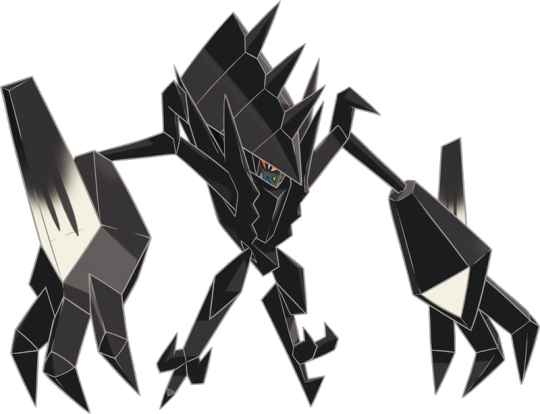
At first glance, it's.....an edgy prism monster? Absorbs light? Design's a bit awkward tbh
BUT THERE'S SO MUCH MORE!!
This thing is the agonised, partially reconstructed remains of another dimension's god of light!! It's torso is a fucking skull, its legs protrude from nostril holes, its unwieldly arms are huge feet stuck to the ends of frail wings!!
It was once a dragon which shone with a blinding light, which illumined its home dimension, but the people there sought to control that light and in doing so destroyed it, wounding Necrozma and plunging their world into darkness
Necrozma absorbs light because it's driven by the single minded goal of regaining its true form!
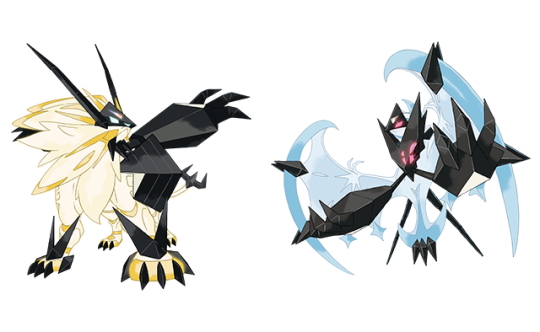
Which is why it chases after and attempts to assimilate the emissaries of the sun and moon! In the hope that it can use their light to reconstitute itself! And yes, using the light of both, it is able to
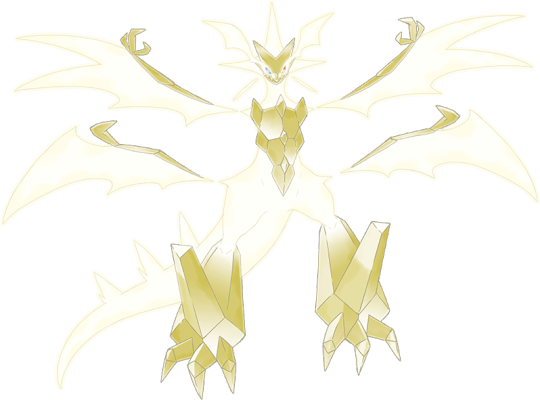
It's still clearly incomplete, but it almost doesn't matter, what's missing is filled in with raw power!
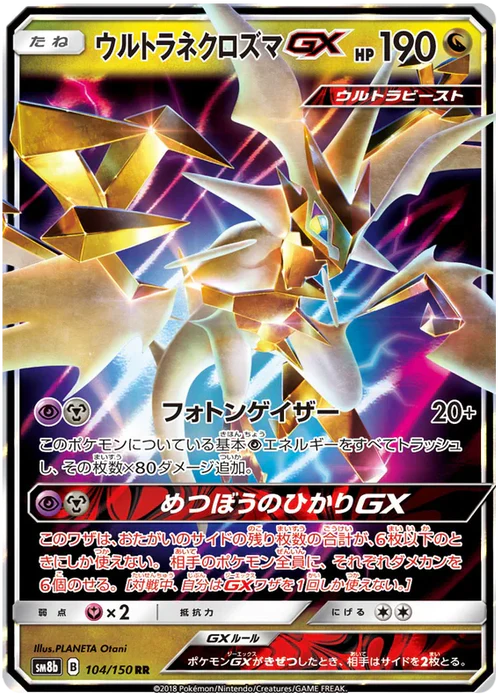
LOOK AT THIS THING! It's Beautiful, shining golden crystal bathed in liquid light, it's like a star in beast form, a dragon of plasma!
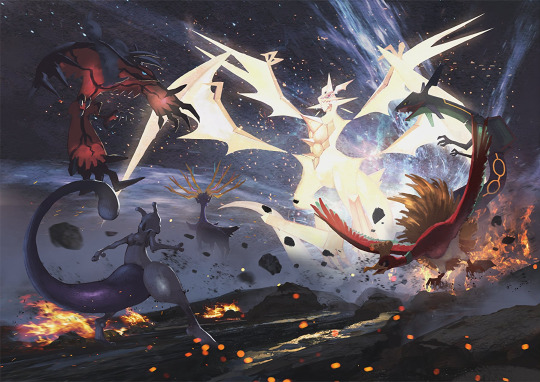
A broken god, reconstituted, beautiful (this art is fucking official btw, how often does Pokemon go this hard?)
youtube
Speaking of Pokemon going hard, this thing is an absolute nuzlocke ender! An uncharacteristically extreme super boss for a series that usually gets criticised for being too easy
youtube
Also, you hear that theme?????? Holy fuck
- Epic
- Glorious
- Majestic
- Terrifying
- Melancholic?...O-oh
Yes, melancholic
Because, despite everything, this refound glory is fleeting. This is a transformation, not an evolution, and fundamentally Necrozma is still not complete, you can only fill in the cracks with stolen energy for so long
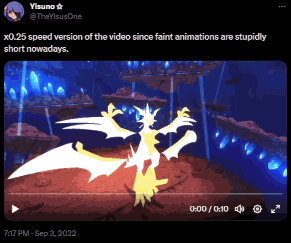
(Note this animation apparently gets cut off in-game before you get to properly see it? This footage is from a BDSP mod hednjd)
Canonically the player character wins that battle, and if you catch Necrozma we see that its ultra form is a temporary transformation, so one way or another that taste of glorious, beautiful, shining completeness is fleeting.
' - '
Necrozma is still incomplete, but for a moment you see the light of what once was,,,,,idk!??! that's kinda rad, kinda wild, I feel bad for this creature???
Like, isn't there something so fundamentally relatable about, knowing your potential, knowing the version of yourself that you're supposed to be, striving to be that version of yourself at all times, but only getting to feel that power for a brief moment, when everything falls into place?
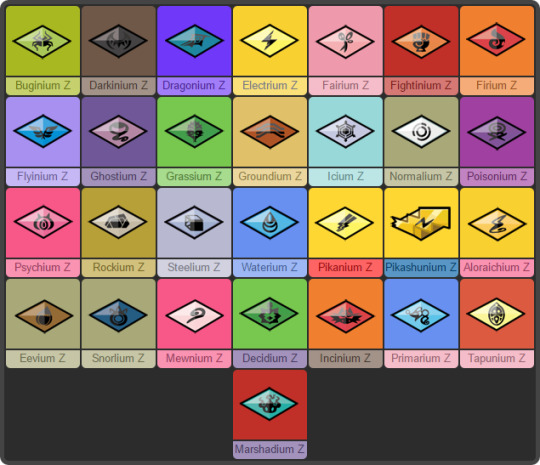
It's implied that the Z crystals (items which allow Pokemon access to once a match special moves) are all shards of Necrozma's original body...Even though the original, full, Necrozma is gone, the embers of its power are spread far and wide
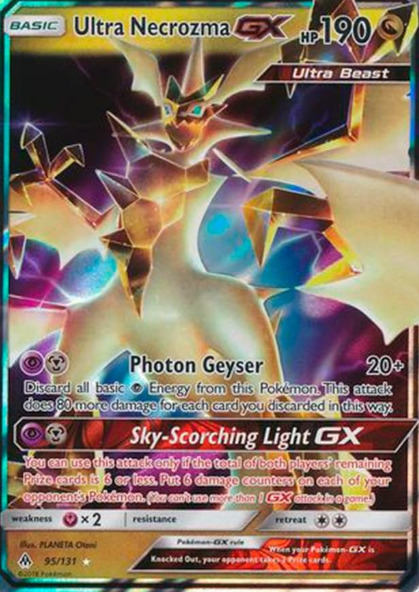
In conclusion:
I just really like Necrozma c:
it's a very specific mix of
- powerful
- beautiful
- cosmic
- devine
- tragic
- melancholic
- and trans probably
that just speaks to me ; 0 ;
#Pokemon#Necrozma#Ultra Necrozma#gushing about a thing I like#Necrozma is great honestly I wish they'd make more merch of it#Youtube
180 notes
·
View notes
Text
The fundamental problem with trying to make tolkien-style fantasy worlds with dwarves, elves, goblins, orcs etc. that aren't racist is that the very premise of this world is "races and race science are real, races can have a race character and some races are better in most ways than all the other ones (except that they can't breed as fast)". The way fantasy races are thought of and treated as, is very much just taking colonial race science categories, exaggerating them and adding magic into the mix. That is an inescapable fact of what fantasy races are and why they're even called races in the first place.
A lot of fantasy racism discourse tends to gravitate around orcs often being inherently evil creatures who mostly exist as dumb brute enemies to be slaughtered at will, but I've personally seen less mention of the fact their role in the stories and games is to essentially represent The Barbarian Oriental Hordes and The Savages. This becomes very apparent if you look at the way they are designed. The good guy human faction has cathedrals, churches, temples, priests and clerics. The orcs have tents, totems and shamans.
This also applies to elves. The high elves are basically always some sort of tall, blonde, white skinned ubermensch who are vastly better than everyone in most ways except breeding (almost always borders on some sort of great replacement theory type shit). Wood elves are almost entirely the noble savage trope.
In almost all cases they also get a racial character where for example the high elves are depicted being smart, elegant, speak in an eloquent and flowery way and have all sort of other behaviours baked into them. Orcs are framed to be stupid, brutish, have no appreciation for art (their totems and paintings don't get counted because they are "savage" and "primitive") and are naturally destructive.
The only real way to avoid the racist tropes of fantasy effectively is to drop the whole race aspect of it. And this doesn't mean that you need to have a regular-human-only setting. You can still have a guy with pointy ears but just without framing them as a race of people. As an example, the fantasy setting I've been working on (on occasion) doesn't have races but it does have people with pointy ears, multiple eyes or other stuff like that. In this setting it is due to mutation and transformation brought through magic in one way or another. Some through using magic, others through curses.
80 notes
·
View notes
Note
Wait what guy who hadn't read Atlas Shrugged?
I was pretty sure I'd told this story here, but a cursory search suggests that I have not. Okay let's gooooo
Many moons ago, I worked in an emergency services call centre. I worked nights- I could get regular shifts, it paid well, and I am a huge freak, just like everyone else who works nights in a call centre. It is a lifestyle that attracts freaks. Some of my coworkers weren't full-time creatures of the night, but students or whoever who picked up occasional nights for the extra money, and one of them was Libertarian Shithead, who we'll call LS for short.
LS was a twentysomething white dude who wore a lot of name brand surfwear and designer sunglasses. I assume his parents were rich. LS loved nothing better than recreational arguing. Unfortunately, he wasn't very good at it; he had some of the most dogshit opinions I've ever encountered in the wild, and was terrible at defending them. He'd say some crap about how Gattaca-type eugenics is Fine, Actually, because if you let people make designer babies, the ~*Free Market will decide what traits are desirable! Racism and colourism and ableism and sexism and intersexism won't affect those choices at all! And I'd get mad, because I have principles to speak of, and we'd get into it, and WITHOUT FAIL, we'd get maybe halfway into an actual discussion about whatever horseshit garbage he was on tonight, and the second he thought he was losing, he'd say "oh, well. I'm an ~*Objectivist, so you can't really understand my perspective unless you've read Ayn Rand." Then he'd sigh, and change the subject.
At the time I had not read any Ayn Rand. Being fundamentally powered by spite, I withstood maybe three weeks of this shit before I pirated an epub of Atlas Shrugged, put it on my e-reader, and proceeded to slam through it at supersonic speed so I could finally get to finish an argument with this terrible boy.
Anon, I fucking hated Atlas Shrugged. The book is bad. It's way too long, every single character is an unbelievable douche, the prose sucks. Ayn Rand wants to fuck a train so so so badly, but the prose is so turgid I couldn't even get invested in how much she wants to fuck a train. And the core of the matter, the politics I was there to understand, are, y'know. Objectivist. Eye-bleedingly selfish and capitalistic, expressed in amazingly childish and blinkered terms. Even the bits where it seems like the shithead capitalist dudes want to fuck each other are too mired in the scunge of Rand's terrible views to be enjoyable.
But I read the fucking thing! I powered through it with only quite minimal complaining! I finished the book on the train to work, and when I saw that LS was on that night, I plonked myself in a seat by him, and metaphorically cracked my knuckles, ready to fuckin' party. In a perfect world, I would have been cool enough to have waited for the perfect mid-argument moment to drop, but I didn't. I think I lasted exactly until we were both off a call at the same time, and then leaned in as close as the desk dividers would let me, and said "So I finished Atlas Shrugged. I have some thoughts."
I cannot overstate how quickly it became obvious that LS had not read the book. For a hot second I thought maybe it had just been a while and the fine details had escaped him, but no; he didn't know who half the characters were, or key points of the plot, or even know any of the stuff in the John Galt speech, i.e. the big juggernaut of Here's How Objectivism Works near the end of the book about Objectivism that this fucking guy hypothetically based his Objectivist views on. It took me maybe five minutes, in between calls, to realise this, and another five for him to admit he hadn't actually read any Ayn Rand. He'd read her Wikipedia page.
ANYWAY I didn't speak to him for like a month after that, and I don't think either of us lost out there!
#at the time I was very angry#but in hindsight I think it was very funny#storytime#ask me ask me ask me#anonymice
152 notes
·
View notes
Text
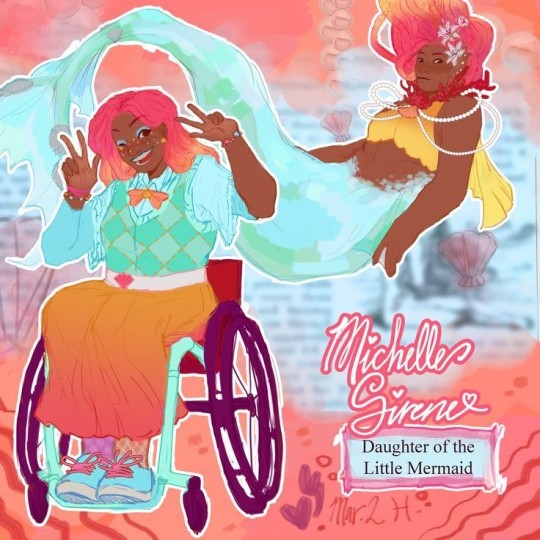
Aaand that's three in a row where I've basically ignored canon and started from scratch
design notes under the cut
Alright, starting from the top-
I always found Meeshell kind of bland, so I worked from the concept up. I wanted to lean into a different aspect of the original story, so I skimmed over the Anderson version, and here's what I came up with!
First off, I'm changing the rules. She has to be entirely submerged in water to access her mermaid form, no h2o shenanigans, I'm sorry
Second, we're giving her a new conflict, one centered around her story. In the original fairy tale the Little Mermaid is the youngest of many sisters, and she desires humanity the most.
We get the wanderlust and the romance a lot, but there's one characteristic that gets glossed over a lot- mermaids don't have souls. So, we're gonna take that shit and RUN with it. I'm thinking like... The Last Unicorn. There is a fundamental difference in how mermaids and other creatures experience emotion. For mermaids it's just... Less. She's not miserable or even unhappy necessarily, she's just kind of on autopilot compared to a human. She doesn't feel much at all, and what she does experience is very dampened
Then, she gets her human form, and the full spectrum of emotion is opened up to her. Mer Mishelle is quiet, unexpressive, generally apathetic. She's still Michelle, with Michelle opinions and Michelle thoughts, but all the flavor has been drained out of her.
Another piece of original canon I'm bringing in is that the floor is knives. Not really, but Michelle experiences a lot of fatigue and pain if she tries to walk for too long, so she's an ambulatory wheelchair user (the wheelchairs name is Coral)
She knows that her story involves putting her fate in someone else's hands in a time where she won't be able to communicate the way she prefers, so she kind of takes after Briar. She's not gonna waste a damn minute. She's super confident, and bubbly, and hyper-chatty, and has almost 0 filter! She's going to say what she thinks for as long as she can as loud as she can!!!
#meeshell mermaid#eah art#eah#ever after high#ever after high art#eah redesign#coffeepaintart#yes i have thought about this cartoon for children designed to sell dolls from almost a decade ago for far too long why do you ask
650 notes
·
View notes
Text
Round 4 - Catholic Character Tournament

Propaganda below ⬇️
John
he’s a priest. he can punch your lights out. he would never hurt a fly. he has connections in the black market. he gives everything he can to the local orphans. he will not hesitate to play pranks on you. he wants everyone to be happy. he has daddy issues probably. he wants a promotion sososososoooooo bad.
I accidentally submitted the last 5actors name but it’s the same guy
Hey everyone please vote for this man I love him he truely is what we need more of in this world the kindest most relatable character has flaws etc etc. Deserves the world
Enrico propaganda
He grew up in the church and became a priest. so devoted to his faith he ended the UNIVERSE to achieve the perfect world aka heaven
Hes Catholic but also so gay for this one vampire that he ended the world for him
He is LITERALLY one big metaphor for the catholic church as a villain. He’s a guy who believes himself to be a martyr on a fundamentally altruistic quest that will better humanity and the world, but in truth hes a destructive force blind to his faults and hypocritical of the atrocities he commits. Even his altruisim is just a lie (that he does believe himself though) because it all just stems from a deep rooted desire he has to alliviate the guilt he feels. Also hes obsessed with ”the world to come” to the point that hes downright nihilistic towards the current world he actually lives in, as well as the other people in it. which i mean. lol. Ultimately hes an insane delusional queen and he should win this because he is just That catholic. also he is a catholic priest :)
his names pussy bc he served cunt (in a catholic god honoring way)
I want my bestie’s guy in bere
No one could feel guilt to this level if not catholic
Religious Allegory mostly woth how his power(white snake) is contradictory it has white to make you think of good things but it contrast with snake a creature that tempted adam and eve. Although he is a Man of faith his stand’s design is far from it being incredibly intimidating and lined with the genetic of dna whihc is scientific compared to faith.
Bro tries to kill a child
serial killer priest bro
HE IS INSANE He spent his whole life believing in fate and when his world turned around Shakespeare tragedy style he made it his mission to bring 「HEAVEN TO EARTH」, which means TEARING AWAY THE FABRIC OF REALITY SO THAT EVERYONE IS AWARE OF THEIR OWN FATE. How does he get there? Simple! By using a half-baked horse to SPEED UP TIME UNTIL THE UNIVERSE RESETS AND LAUNCHES EVERYONE INTO A NEW WORLD. How did he GET this horse??? Oh, as one does - his (dead) best friend’s toe bone grew into a baby made of leaves that vored him, but he survived and grew even more eyebrows than he already had. And that’s without getting into the STUFF that makes him a phenomenal, S-tier, fine wine that EXPLODES and causes you to see VISIONS type of character. That’s just the surface. But, ah, that’s Catholics for ya. Vote Enrico Pucci for king of the Catholic tournament. 👍🏻
#john mulcahy#m a s h#mash#m*a*s*h#cct polls#tumblr tournament#tumblr bracket#tumblr polls#polls#francis mulcahy#FRANCIS JOHN PATRICK MULCAHY#john mulaney#enrico pucci#father pucci#jojo’s bizarre adventure#r4
158 notes
·
View notes